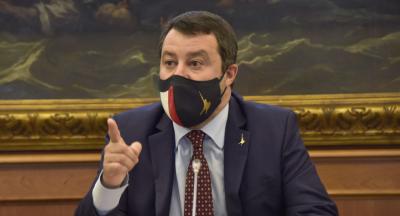Salvini and the regions unhappy with latest measures

ROME - The latest decree from Italian Prime Minister Mario Draghi, much to the consternation of the League and many of the regions, has confirmed that the national curfew will stay at 10 p.m. until at least June 1.
The League, led by Matteo Salvini, chose to abstain from Wednesday’s vote on the new measures to come into force on April 26. Salvini, along with the leaders of many of the regions had been pushing for a curfew of 11 p.m. and the opening of restaurants to help restart the economy.
In an interview with Il Giornale on Thursday Salvini said, “all the regions, all of them, even those on the left, are asking to review these rules, for example moving the curfew and allowing a few more things to open… Ideological criteria has prevailed, not scientific.”
He then said, in regards to his party’s abstention, “Draghi has told us that in 15 days there will be a new decree with new reopenings, then we will vote.”
In response to Salvini and the League’s complaints about the measures adopted, Draghi has said, “we made the decisions together, in government. Frankly I am struggling to understand” the polemics.
This new decree has also revealed that the national state of emergency will remain in place until July 31, and from June 1 restaurants will be allowed to open indoors, with restaurants allowed to be open only outside from April 26.
The decree also confirmed that from April 26 the majority of the country will be in the yellow zone, with these regions being allowed outdoor group sports and free movement between other yellow zones. The reopening of swimming pools however is yet to be announced, with May 15 expected to be the date for this.
Museums are reopening in yellow zones, with cinemas, concerts and other events allowed only in the open and with prebooked seats.
Red and orange zone inhabitants will still need a pass for movement between regions.
Regarding schools, red zones can still only have in person teaching for 50-75 percent of student, while yellow and orange zones are allowed 70-100 percent of students back in classrooms.
ol


